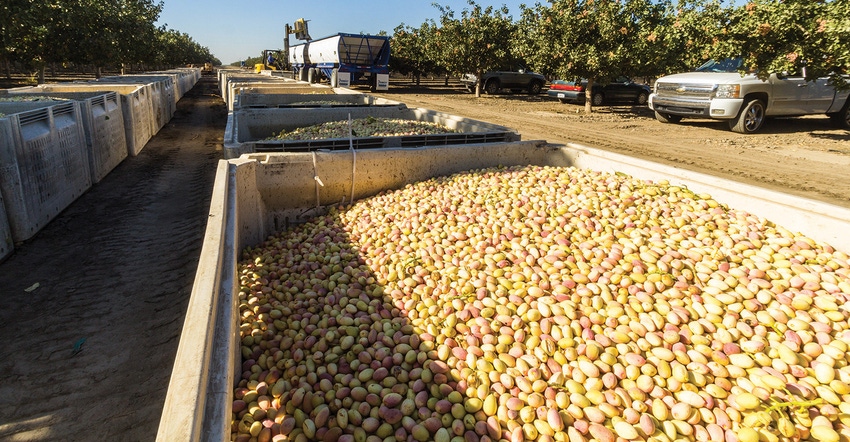
What’s the sense in achieving success if it isn’t shared with others?
Richard Matoian, president of the American Pistachio Growers, is a tireless spokesman for his group and the industry at large. Earlier this year, right about the time California’s trees were starting to show new season bloom, Matoian released a report he called, The State of the Pistachio Industry.
While end-of-harvest hindsight generally proves or disproves the early prognostications, Matoian himself admitted: “Time will tell how we do this year,” he said. “Those results will be dependent on a lot of things, foremost among them being COVID status, competition, and the issue of tariffs.”
In his presentation, he talked about current and anticipated bearing acres with data showing the actual amount of bearing acres going up, and in some years, substantially so.
“Based on satellite imagery and new data from Land IQ, the numbers have been revised,” he reported. “Where we initially thought there were around 320,000 bearing acres, we now know that acreage in 2020 to be about 371,000 and for 2021, that number will be close to 409,000 bearing acres --- about a 20% increase over what was previously known.
“And going into the future, by 2025, we will definitely be above 500,000 bearing acres for pistachio production.”
Bringing in a record 1 billion, 15 million pounds in 2020 harvest — the first time that has happened --- 2021 production is still an educated guess at this point.
“Last year was an on-year, albeit not as large an on-year as we’ve experienced on a per-acre basis. What that means for 2021 is that those trees that didn’t produce as large a crop could produce an equal amount or possibly a higher amount than they did in the 2020 year. Time will tell what ultimately gets harvested.”
Turning to 2020 crop shipments made this year (a period that started last Sept. 1 and ends on Aug. 31, 2021), Matoian said: “Domestic shipments are up, which is a positive trend. Some 70% of our product ends up as export shipment, which for the current year is up into positive percentages despite competition and the COVID situation around the world.”
European market up
The European market is up by a whopping 45% year-over-year compared with last year while China/Hong Kong combined are up 16%. As to what the future might hold, there are lots of variables.
“Hopefully COVID comes to an actual end, but what does that due to buying habits that showed the coronavirus situation in 2020 actually helped increase domestic consumption? Competition will impact our numbers. Iran had a decent crop in 2020, although not as large as they did previously. Turkey and other countries are starting to put in acreage, but we don’t have a lot of other competition we’re dealing with. And despite a USDA market facilitation program that paid growers $146 an acre due to the loss of the China market, we’re hoping the change of administration will bring a reduction or elimination of tariffs we have in China.”
Matoian extolled the progress of APG working on pest control issues. “Both the pistachio and almond industries secured $6 million last year — with an increase to $8.1 million this year — to fund a pilot program using sterile flies to combat naval orangeworm. “This effort is demonstrating how we can reduce our use of pesticides in our orchards and at the same time, reduce NOW incidents and damage.”
APG Chairman Dominic Pitigliano, a fourth-generation pistachio/almond/walnut grower working over 12,000 acres, also spoke, noting: “Farming presents daily difficulties and change and many growers, obvious to the fact that it takes seven years to see some results, are now planting for their family’s future. We’re here for the long term.”
Read more about:
PistachiosAbout the Author(s)
You May Also Like




